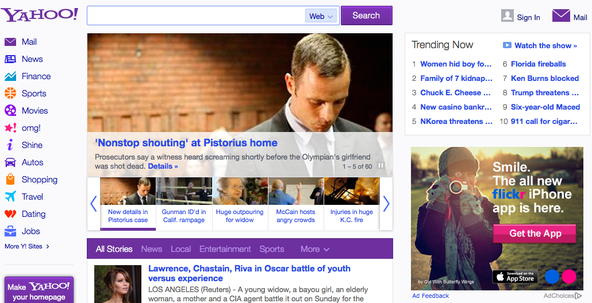These services have a drawback, however: the work is not done in real time. Workers pick up the tasks that interest them and for which they are qualified, but as independent contractors they work on their own schedules.
Computer science researchers have been trying to build systems that summon online workers on demand and produce immediate results. Much initial work has focused on completing tasks for people with disabilities, because that is where the need is great. For example, a blind person may need to identify the contents of a can from a kitchen cupboard right now, not later. A deaf college student may want to follow the give-and-take of a seminar discussion as it unfolds in the classroom, and not wait to read a transcript the next day.
VizWiz, a free iPhone app developed by Jeffrey P. Bigham of the University of Rochester and colleagues in its Human Computer Interaction program, gives real-time help to blind users.
VizWiz users take a photograph as best as they can — it may take several tries before the desired object is properly framed — and then record one question about it (“What is on the label of the can?”). Besides needing help identifying food labels, they may want to know the denomination of paper currency, say, or whether a baby’s head shows signs of a rash.
In the app’s first version, the picture and the recorded question were sent to several contractors at Mechanical Turk, to be answered for a tiny fee paid by the Rochester researchers. (More than one person can answer the same question, to ensure accuracy.) The current version offers additional options, like free “friendsourcing” of the question to the user’s Facebook friends, Twitter followers or a particular e-mail correspondent. Professor Bigham says that so far, the service has answered about 60,000 questions from 6,000 users.
FOR a typical Mechanical Turk request, it may take a few minutes, hours or days before a worker picks up the request. VizWiz helps blind users achieve real-time help by going into action as soon they alert the service that they’re preparing to take a picture. While the photograph is being shot, VizWiz posts the assignment on Mechanical Turk. If workers come online to help, but the picture isn’t yet ready, the software keeps them busy identifying archived photos. That way, they are at the ready when the real photo appears.
The crowd turns out to be a superior source of aid, compared with one’s social network, in the opinion of recently surveyed VizWiz users. As one respondent said, “When I need something identified like a can or TV dinner I am going to use it now, not whenever my friends get around to telling me what it is. :)”
Another smartphone app developed at Rochester, called Scribe, helps the deaf and hearing-impaired. With the app, users send an audio stream to many workers who provide real-time transcription. No single unskilled worker could transcribe all of the words in a live stream — only highly trained transcribers with special equipment can do that. But the software makes it possible to achieve the same results by coordinating a group of six or seven amateurs.
The software feeds the stream to each member of the crowd, but parts of it are, in effect, assigned to different people by slowing down short passages, making them easier to transcribe. Each worker transcribes the highlighted portion, and then the Scribe software stitches together the various pieces.
Computer scientists at M.I.T. have developed a “retainer model” for Turkers who need to be recruited before requests come in. Instead of keeping workers in a holding pattern with make-work, their software pays workers to remain on standby until a real request arrives on their screen.
As the researchers hone their technology and techniques, real-time help may expand to other uses. For example, an online crowd could help edit an e-mail draft, supply feedback about changes to a Web site, or do bilingual interpretation — all without delay. And researchers are now experimenting with a live video feed in VizWiz in place of individual photos.
As in most every other part of life, so it is in gaining the help of the crowd: no form of gratification beats instant.
Randall Stross is an author based in Silicon Valley and a professor of business at San Jose State University. E-mail: stross@nytimes.com.
Article source: http://www.nytimes.com/2013/04/21/technology/apps-help-find-online-workers-quickly.html?partner=rss&emc=rss
